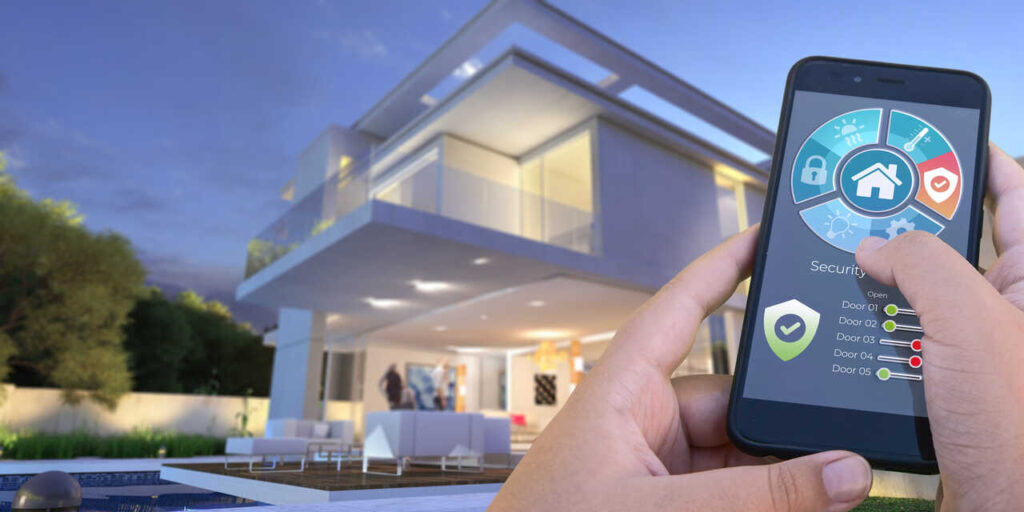Introduction
A smart home security system combines traditional security measures with smart technology, providing enhanced control, automation, and integration. This guide covers everything you need to know about smart home security systems, including key features, popular brands, installation tips, and best practices for securing your home.
1. Key Features of Smart Home Security Systems
1.1. Centralized Control
Smart Hubs: Devices like Amazon Echo, Google Home, or proprietary hubs manage and control connected devices.
Mobile Apps: Control and monitor your system remotely via smartphone apps.
1.2. Surveillance Cameras
Indoor and Outdoor Cameras: Weather-resistant outdoor cameras and discreet indoor models.
Live Streaming and Recording: Real-time video feed and cloud/local storage for recordings.
Motion Detection: Alerts and recording triggered by movement.
Night Vision: Infrared technology for low-light conditions.
1.3. Smart Locks
Keyless Entry: Use PIN codes, biometric scans, or smartphone apps.
Remote Access: Lock/unlock doors remotely and monitor entry logs.
1.4. Alarm Systems
Intrusion Alarms: Motion sensors, door/window sensors, and glass break detectors.
Environmental Sensors: Smoke, CO2, water leak, and temperature sensors.
1.5. Integrated Systems
Automation: Trigger actions like turning on lights when motion is detected.
Interconnectivity: Seamless integration with other smart devices such as thermostats and lighting systems.
2. Popular Brands and Products
2.1. Ring
Ring Alarm Security Kit: Comprehensive system with door/window sensors, motion detectors, and a base station.
Ring Video Doorbells: Integrated camera and intercom.
2.2. Nest
Nest Secure: Alarm system with motion detectors and door/window sensors.
Nest Cam: Indoor and outdoor cameras with high-definition video.
2.3. Arlo
Arlo Pro: Wireless, weatherproof cameras with rechargeable batteries.
Arlo Ultra: 4K video quality and advanced AI features.
2.4. ADT
ADT Command: Smart home integration with professional monitoring services.
Blue by ADT: DIY installation with optional professional monitoring.
2.5. SimpliSafe
SimpliSafe Home Security System: Customizable kits with various sensors and a central hub.
SimpliCam: Indoor camera with night vision and motion alerts.
3. Installation Tips
3.1. Planning
Assessment: Identify vulnerable areas in and around your home.
Coverage: Ensure cameras cover entrances, driveways, and common areas.
3.2. Placement
Cameras: Position cameras at high points, angled downwards to cover more area.
Sensors: Install door/window sensors at all entry points and motion sensors in high-traffic areas.
3.3. Connectivity
Wi-Fi Signal: Ensure strong signal strength in all areas where devices are installed.
Power Sources: Consider battery life and proximity to power outlets.
3.4. Integration
Compatibility: Verify compatibility with existing smart home devices.
Automation: Set up routines and triggers for automated responses.
4. Best Practices for Security
4.1. Regular Updates
Firmware: Keep all devices updated to the latest firmware.
App Updates: Ensure your control apps are up to date.
4.2. Strong Passwords
Unique Passwords: Use strong, unique passwords for all devices and accounts.
Two-Factor Authentication: Enable 2FA for additional security.
4.3. Monitoring and Alerts
Regular Checks: Regularly review footage and system logs.
Immediate Alerts: Set up notifications for immediate alerts on suspicious activities.
4.4. Privacy Settings
Permissions: Manage permissions for who can access and control your system.
Data Security: Ensure data is encrypted and securely stored.
4.5. Professional Monitoring
Consider Services: Professional monitoring can provide 24/7 security and emergency response.
Conclusion
Investing in a smart home security system can significantly enhance your home’s safety and convenience. By understanding the key features, choosing the right products, and following best practices for installation and security, you can effectively protect your home and loved ones.
For more Informative articles you can visit our blog royalsprinter.com
Read Also: Personal Finance – Understanding How Your Behavior Impacts Financial Success

